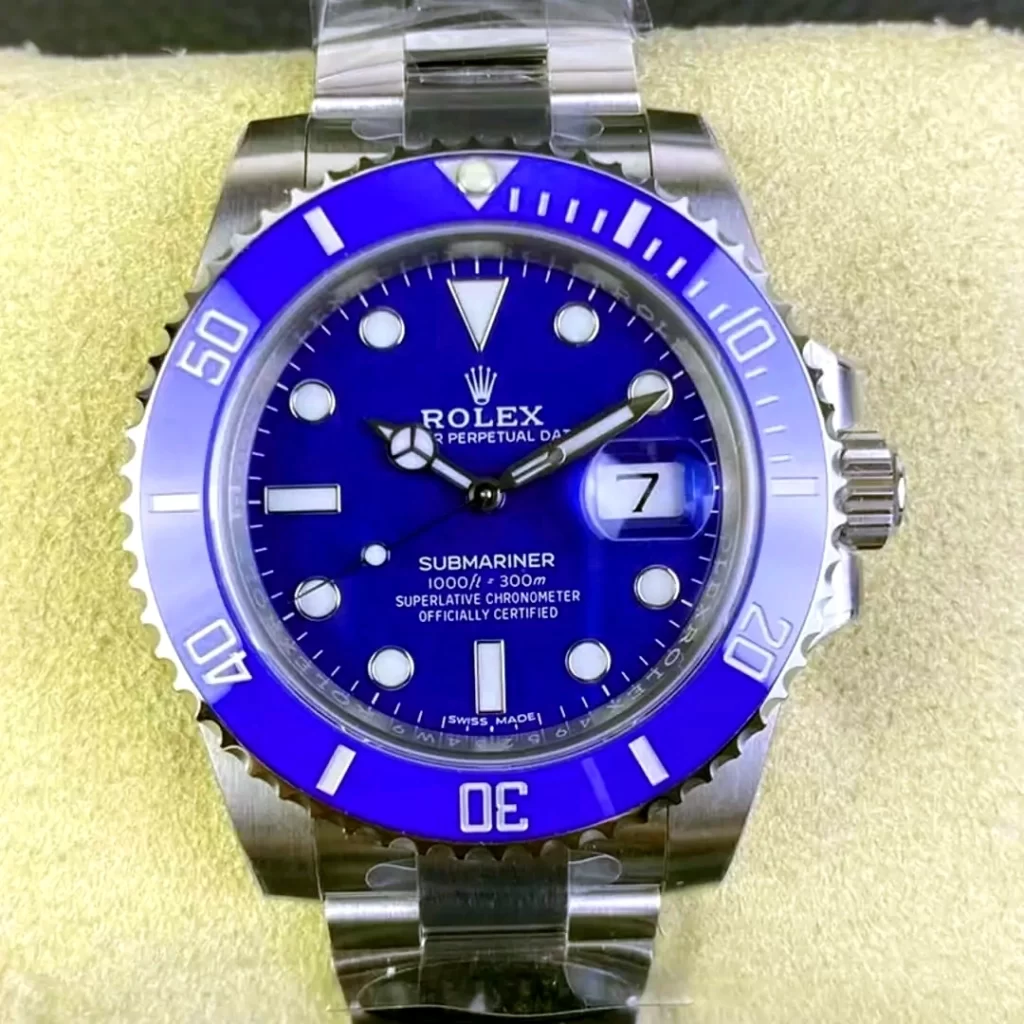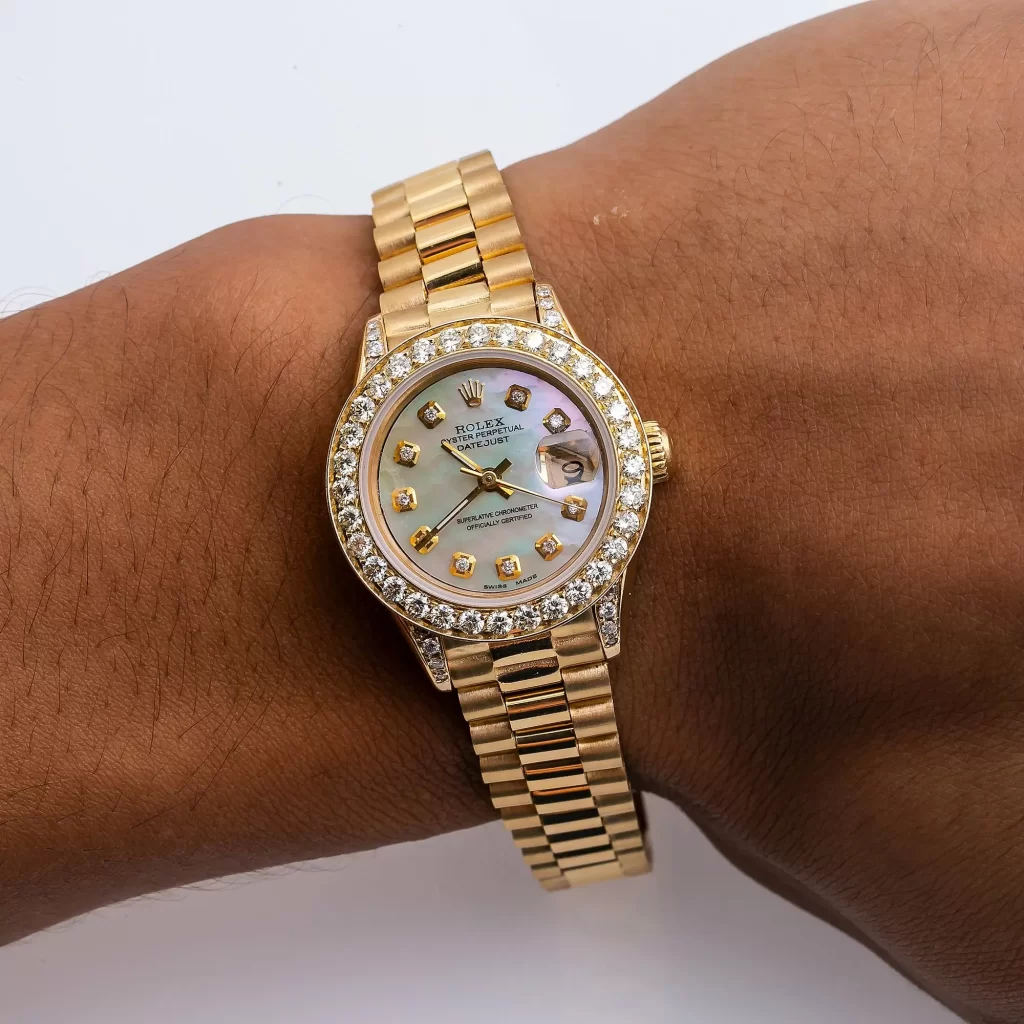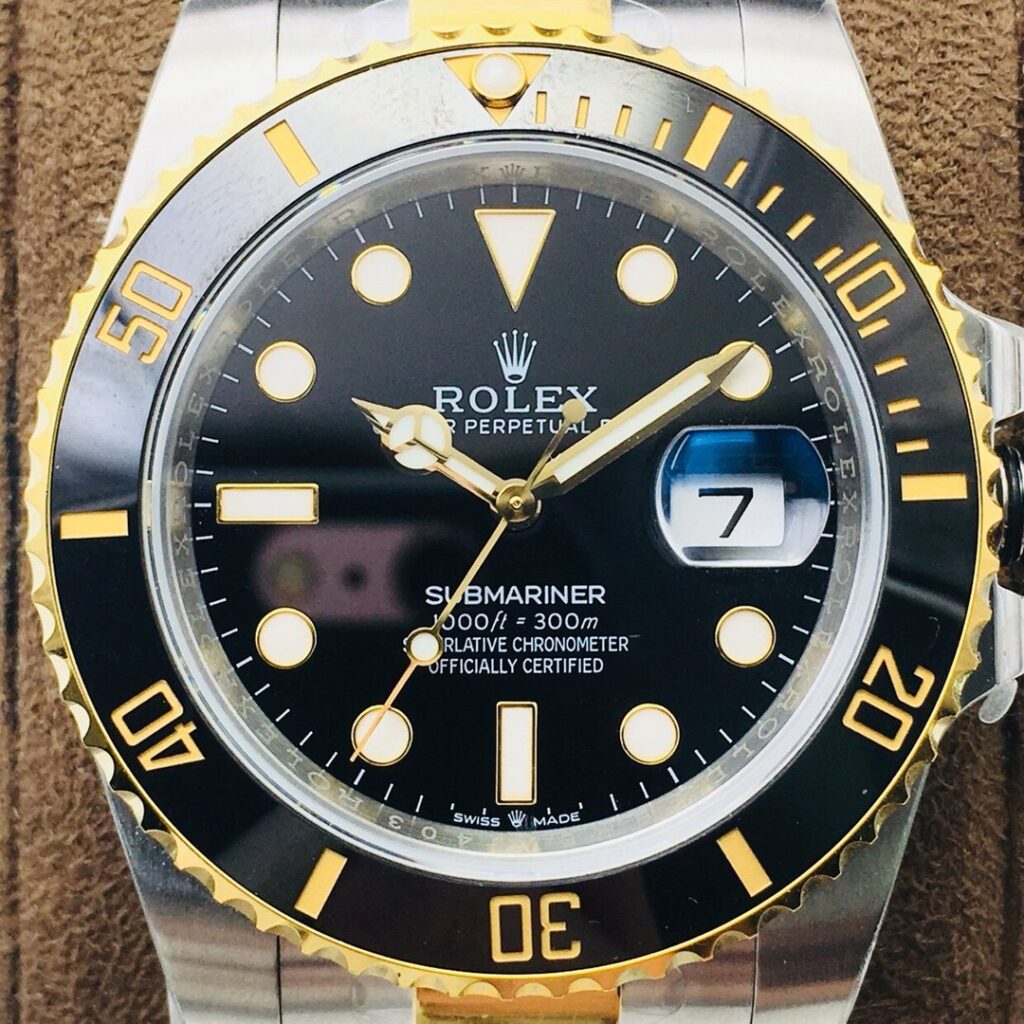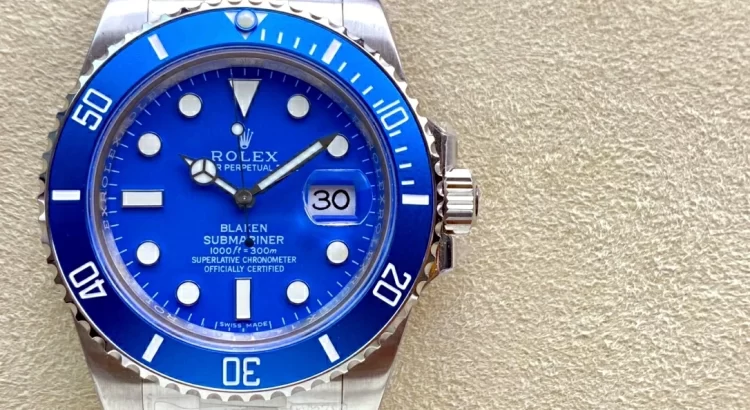When it comes to choosing a Rolex, many enthusiasts find themselves torn between the Submariner and the GMT Master II. These two models are iconic, both born out of functional needs, yet they cater to slightly different lifestyles. Though they share many similarities, there are subtle differences that make each one special in its own right. The decision, for me, feels like a pull between my head and my heart, as each watch brings something unique to the table.

Background and Evolution
Both the Submariner and the Rolex GMT Master were originally designed as tool watches, created to serve specific professional needs. The Submariner, launched in 1953, was engineered for divers, boasting 100-meter water resistance and a rotating 60-minute bezel. The watch also featured lume on the dial to ensure legibility in low-light conditions, especially underwater. Over time, the Submariner underwent several enhancements: crown guards (1959), a date function (1969), the transition from 316L to 904L steel (1988), and a Cerachrom bezel (2010).
In contrast, the GMT Master was developed in partnership with Pan Am for pilots, with a focus on keeping track of multiple time zones. It featured a fourth hand and a 24-hour rotating bezel to indicate GMT (Greenwich Mean Time). Although pilots later adopted UTC (Coordinated Universal Time) in 1972, the GMT name stuck. The watch evolved over the years, incorporating aluminum bezels (1956), crown guards (1959), precious metals, and various bracelets. A major leap occurred with the introduction of the GMT Master II, which allowed the GMT hand to be set independently of the other hands, making it even more practical for modern use.
Despite being nearly 70 years old, both models retain a remarkably timeless design, a testament to the quality and foresight behind them. However, the differences, while subtle, add unique character to each.
Key Differences Between the Submariner and GMT Master II
At first glance, the Submariner and GMT Master II appear strikingly similar, yet a closer inspection reveals several distinct features. Let’s start with the most obvious:
Functionality: The GMT Master II’s defining feature is its GMT complication. This requires a different movement, one that powers a fourth hand to track a second time zone. The GMT also boasts a bi-directional bezel with a 24-hour scale, compared to the Submariner’s 60-minute scale. Some GMT models even feature half-and-half bezel colors (e.g., blue and red or black and red), symbolizing day and night, which has led to popular nicknames like “Pepsi” and “Coke.”

Bracelet Choices: While both watches are available with the iconic Oyster bracelet, the GMT Master II also offers a Jubilee bracelet, which features polished center links. This gives the GMT a slightly dressier, less rugged feel than the Submariner, making it more versatile for both casual and formal settings.
Size and Case: Both the Rolex Submariner and GMT Master II feature Rolex’s “Super Case,” which was introduced in 2005 for the GMT and in 2008 for the Submariner. This design features broader lugs, a thicker profile, and a larger Cerachrom bezel, giving both watches a more robust silhouette. The Submariner’s case size was upgraded to 41mm in 2020, compared to the GMT Master II’s 40mm case. Despite this, the Super Case has minimized the size differences between the two, making it harder to visually distinguish them.
Dial and Bezel Details: The Submariner features a slightly busier dial with four lines of text, including the “1000ft = 300m” marking, while the replica Rolex GMT Master II is cleaner in comparison. The hands on the Submariner are also subtly different; the hour hand is more pointed, the minute hand is thinner, and the second hand (with the “lollipop” design) has less lume than the GMT’s. The Submariner’s bezel numerals are smaller and squarer, and the markers are separated by batons that mimic the dial indices. While this design choice favors legibility, the Submariner’s bezel is arguably less bold compared to the GMT’s more colorful, dynamic design.
Bracelet and Case Back: The Submariner’s bracelet is 1mm wider at the clasp and slightly more rugged, thanks to a thicker case back that provides additional water resistance (up to 300 meters, compared to the GMT’s 100 meters). This reinforces the Submariner’s image as a tool watch built for harsh conditions, while the GMT’s slightly slimmer case and bracelet feel a bit more refined.
The Logical Choice: GMT Master II
From a practical standpoint, the GMT Master II ticks all the right boxes for me. The GMT complication is incredibly useful in today’s world of global travel. Whether I’m abroad or working with international colleagues, the ability to track a second time zone easily is an invaluable feature.
The GMT’s polished center links give it a more formal appearance, making it adaptable to both casual and semi-formal settings. The iconic two-tone bezel, especially the red and blue “Pepsi” version, is a major draw. For me, it’s more than just a functional tool; it’s a statement piece that reflects Rolex’s long history of innovation.
With multiple bezel and bracelet options, the GMT Master II offers a level of customization that the Submariner doesn’t, especially when considering the range of precious metals and dial colors available. It’s a versatile and functional watch that suits both my lifestyle and aesthetic preferences, making it the logical pick.
The Emotional Pull: Submariner
However, if I listen to my heart, the clone Rolex Submariner stands out. This watch is more than just a watch; it represents something deeply personal. Growing up, the Submariner was the epitome of success. It was “THE Rolex” – a symbol of achievement and luxury. And when I first tried one on, I instantly understood why it held that status. The clean, balanced design, the rugged yet refined feel, and the sense of history it carries with it – all of these things make the Submariner an emotional choice.
While the Submariner may not have the polished center links or the colorful bezel of the GMT Master II, it possesses a timeless elegance. The dial is cleaner, the bracelet more understated, and the overall design feels balanced and unpretentious. The brushed finish on the bracelet is practical, hiding everyday wear and tear, while the Submariner’s slightly thicker case back and greater water resistance add to its robust, tool-watch charm.

The Submariner resonates on a deeper level. It’s a replica watch that embodies my values of simplicity, durability, and understated luxury – qualities I identify with, making it the choice that speaks to my personality.
Choosing between the Rolex Submariner and GMT Master II comes down to what you value more. The GMT Master II is the practical, versatile, and functional choice, perfect for anyone who travels frequently or appreciates its more refined, customizable design. The Submariner, on the other hand, holds a special place for those who favor timeless elegance and rugged charm – a watch that speaks to emotions as much as it does to functionality.
